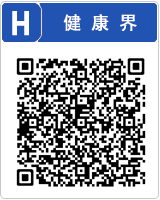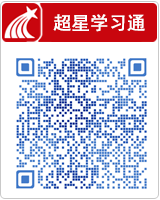中国全科医学 ›› 2025, Vol. 28 ›› Issue (12): 1439-1445.DOI: 10.12114/j.issn.1007-9572.2024.0194
所属专题: 老年人群健康最新文章合辑; 老年问题最新文章合辑
收稿日期:2024-06-07
修回日期:2024-07-12
出版日期:2025-04-20
发布日期:2025-02-06
通讯作者:
王玫
作者贡献:
乐霄负责本研究构思与设计、研究数据的整理和统计分析、论文起草;王玫负责研究整体设计、数据提取、研究质量控制、论文指导和审校,对文章整体负责。
基金资助:Received:2024-06-07
Revised:2024-07-12
Published:2025-04-20
Online:2025-02-06
Contact:
WANG Mei
摘要: 背景 主观症状是老年患者就诊和再入院的主要原因,老年患者症状与年龄增长密切相关。目前少有研究关注老年患者症状的增龄性变化,由此降低了老年患者症状管理的针对性、动态性和前瞻性。 目的 探究近10年老年前期及老年住院患者的住院特征、高频症状的发生率及随年龄的变化规律,为老年前期及老年住院患者症状管理、功能改善提供参考和方向。 方法 本研究为回顾性研究,选取2014—2023年华中科技大学同济医学院附属同济医院老年前期及老年住院患者为研究对象。采用医院"医渡云"医学数据检索与应用平台进行检索,通过平台结果分析界面提取住院科室、疾病诊断前5位统计数据、患者症状统计数据,以症状发生率≥5%定义为高频症状,老年住院患者的高频症状分为共性、呼吸系统、消化系统、神经系统、循环系统、泌尿系统症状6大类。采用例(%)描述老年住院患者的住院科室、疾病诊断、症状分布情况。分析50~<60岁(老年前期)、60~<70岁(低龄老年)、70~<80岁(中高龄老年)、≥80岁(高龄老年)住院患者高频症状的差异。采用Origin绘制散点图和曲线图描述患者症状随年龄增长发生率的变化规律。 结果 研究共纳入1 214 387例老年前期及老年住院患者,其中老年前期患者465 488例(38.33%),低龄老年患者422 935例(34.83%),中高龄老年患者235 364例(19.38%),高龄老年患者90 600例(7.46%)。老年前期及老年患者住院科室排列第1位为心血管内科;老年前期患者疾病诊断排列第1位为恶性肿瘤化疗,低龄和中高龄老年患者为高血压,高龄老年患者为冠心病。50~<60岁年龄段住院患者高频症状为12项,60~<70岁年龄段高频症状为14项,70~<80岁年龄段高频症状为19项,≥80岁年龄段高频症状为23项。高频症状以体力下降、体重下降、咳嗽、胸闷、消化不良较为突出,呼吸系统症状随年龄呈现"高增长"趋势,消化系统症状增龄性变化呈现异质性,神经、循环、泌尿系统症状发生率随年龄呈现相对"低增长"趋势。 结论 老年前期及老年住院患者各系统症状的发生率随年龄增长总体呈增长趋势,不同症状随年龄的变化速率不同,70岁以后老年住院患者的疾病诊断、高频症状的数量和发生率均较低龄老年人发生了大幅变化,增龄性变化的作用开始凸显,70岁可能成为老年住院患者整体状况衰退的重要转折。
中图分类号:
| 项目 | 排序 | 50~<60岁(n=465 488) | 60~<70岁(n=422 935) | 70~<80岁(n=235 364) | ≥80岁(n=90 600) | ||||
|---|---|---|---|---|---|---|---|---|---|
| 项目 | 例(%) | 项目 | 例(%) | 项目 | 例(%) | 项目 | 例(%) | ||
| 住院科室前5位 | 1 | 心血管内科 | 24 577(5.3) | 心血管内科 | 30 495(7.2) | 心血管内科 | 23 846(10.1) | 心血管内科 | 11 755(13.0) |
| 2 | 妇科肿瘤 | 17 378(3.7) | 消化内科 | 15 816(3.7) | 神经内科 | 9 660(4.1) | 综合医疗科 | 6 947(7.7) | |
| 3 | 综合肿瘤科 | 17 221(3.7) | 胸部肿瘤科 | 14 538(3.4) | 消化内科 | 8 950(3.8) | 呼吸内科 | 3 830(4.2) | |
| 4 | 消化内科 | 16 792(3.6) | 神经内科 | 14 395(3.4) | 呼吸内科 | 8 664(3.7) | 消化内科 | 3 655(4.0) | |
| 5 | 血液内科 | 13 350(2.9) | 综合肿瘤科 | 13 305(3.1) | 泌尿外科 | 7 311(3.1) | 呼吸与危重症医学科 | 3 604(4.0) | |
| 疾病诊断前5位 | 1 | 恶性肿瘤化疗 | 44 647(9.6) | 高血压 | 47 735(11.3) | 高血压 | 35 155(14.9) | 冠心病 | 20 850(23.0) |
| 2 | 腺癌 | 36 819(7.9) | 腺癌 | 41 382(9.8) | 冠心病 | 31 960(13.6) | 高血压3级 | 19 434(21.5) | |
| 3 | 高血压 | 32 686(7.0) | 恶性肿瘤化疗 | 39 848(9.4) | 高血压3级 | 29 437(12.5) | 肺部感染 | 17 386(19.2) | |
| 4 | 乳腺恶性肿瘤 | 27 294(5.9) | 2型糖尿病 | 35 011(8.3) | 2型糖尿病 | 24 812(10.5) | 高血压 | 16 268(18.0) | |
| 5 | 2型糖尿病 | 23 952(5.1) | 冠心病 | 34 188(8.1) | 肺部感染 | 24 175(10.3) | 2型糖尿病 | 14 199(15.7) | |
| 性别 | 1 | 女 | 237 399(51.0) | 男 | 231 345(54.7) | 男 | 136 511(58.0) | 男 | 54 088(59.7) |
| 2 | 男 | 228 089(49.0) | 女 | 191 590(45.3) | 女 | 98 853(42.0) | 女 | 36 512(40.3) | |
表1 不同年龄段老年住院患者住院特征分布情况
Table 1 Distribution of hospitalization characteristics of elderly inpatients in different age groups
| 项目 | 排序 | 50~<60岁(n=465 488) | 60~<70岁(n=422 935) | 70~<80岁(n=235 364) | ≥80岁(n=90 600) | ||||
|---|---|---|---|---|---|---|---|---|---|
| 项目 | 例(%) | 项目 | 例(%) | 项目 | 例(%) | 项目 | 例(%) | ||
| 住院科室前5位 | 1 | 心血管内科 | 24 577(5.3) | 心血管内科 | 30 495(7.2) | 心血管内科 | 23 846(10.1) | 心血管内科 | 11 755(13.0) |
| 2 | 妇科肿瘤 | 17 378(3.7) | 消化内科 | 15 816(3.7) | 神经内科 | 9 660(4.1) | 综合医疗科 | 6 947(7.7) | |
| 3 | 综合肿瘤科 | 17 221(3.7) | 胸部肿瘤科 | 14 538(3.4) | 消化内科 | 8 950(3.8) | 呼吸内科 | 3 830(4.2) | |
| 4 | 消化内科 | 16 792(3.6) | 神经内科 | 14 395(3.4) | 呼吸内科 | 8 664(3.7) | 消化内科 | 3 655(4.0) | |
| 5 | 血液内科 | 13 350(2.9) | 综合肿瘤科 | 13 305(3.1) | 泌尿外科 | 7 311(3.1) | 呼吸与危重症医学科 | 3 604(4.0) | |
| 疾病诊断前5位 | 1 | 恶性肿瘤化疗 | 44 647(9.6) | 高血压 | 47 735(11.3) | 高血压 | 35 155(14.9) | 冠心病 | 20 850(23.0) |
| 2 | 腺癌 | 36 819(7.9) | 腺癌 | 41 382(9.8) | 冠心病 | 31 960(13.6) | 高血压3级 | 19 434(21.5) | |
| 3 | 高血压 | 32 686(7.0) | 恶性肿瘤化疗 | 39 848(9.4) | 高血压3级 | 29 437(12.5) | 肺部感染 | 17 386(19.2) | |
| 4 | 乳腺恶性肿瘤 | 27 294(5.9) | 2型糖尿病 | 35 011(8.3) | 2型糖尿病 | 24 812(10.5) | 高血压 | 16 268(18.0) | |
| 5 | 2型糖尿病 | 23 952(5.1) | 冠心病 | 34 188(8.1) | 肺部感染 | 24 175(10.3) | 2型糖尿病 | 14 199(15.7) | |
| 性别 | 1 | 女 | 237 399(51.0) | 男 | 231 345(54.7) | 男 | 136 511(58.0) | 男 | 54 088(59.7) |
| 2 | 男 | 228 089(49.0) | 女 | 191 590(45.3) | 女 | 98 853(42.0) | 女 | 36 512(40.3) | |
| 症状 | 50~<60岁(n=465 488) | 60~<70岁(n=422 935) | 70~<80岁(n=235 364) | ≥80岁(n=90 600) | χ2值 | P值 |
|---|---|---|---|---|---|---|
| 共性症状 | ||||||
| 体力下降 | 75 546(16.2) | 77 684(18.4) | 55 161(23.4) | 28 251(31.2) | 13 724.383 | <0.001 |
| 体重下降 | 43 637(9.4) | 46 786(11.1) | 28 619(12.2) | 11 225(12.4) | 1 704.702 | <0.001 |
| 乏力 | 33 072(7.1) | 32 828(7.8) | 21 916(9.3) | 9 824(10.8) | 2 072.424 | <0.001 |
| 疼痛 | 31 728(6.8) | 29 687(7.0) | 17 064(7.3) | 6 387(7.0) | 47.200 | <0.001 |
| 睡眠不良 | 22 144(4.8) | 22 231(5.3) | 15 596(6.6) | 8 056(8.9) | 3 045.204 | <0.001 |
| 夜眠差 | 15 434(3.3) | 16 186(3.8) | 10 709(4.5) | 5 896(6.5) | 2 282.928 | <0.001 |
| 呼吸系统症状 | ||||||
| 咳嗽 | 40 449(8.7) | 50 866(12.0) | 35 706(15.2) | 17 703(19.5) | 12 012.333 | <0.001 |
| 胸闷 | 38 788(8.3) | 47 715(11.3) | 34 947(14.8) | 16 704(18.4) | 11 574.216 | <0.001 |
| 发热 | 24 372(5.2) | 24 932(5.9) | 15 833(6.7) | 8 845(9.8) | 2 924.868 | <0.001 |
| 咳痰 | 16 770(3.6) | 23 464(5.5) | 17 628(7.5) | 10 602(11.7) | 11 410.511 | <0.001 |
| 气喘 | 10 522(2.3) | 15 120(3.6) | 14 212(6.0) | 9 333(10.3) | 15 586.085 | <0.001 |
| 气促 | 12 087(2.6) | 14 800(3.5) | 12 123(5.2) | 7 036(7.8) | 7 036.050 | <0.001 |
| 呼吸困难 | 8 558(1.8) | 9 965(2.4) | 7 657(3.3) | 4 555(5.0) | 3 744.223 | <0.001 |
| 消化系统症状 | ||||||
| 消化不良 | 31 439(6.8) | 34 239(8.1) | 25 281(10.7) | 13 860(15.3) | 8 668.611 | <0.001 |
| 呕吐 | 28 489(6.1) | 28 166(6.7) | 17 317(7.4) | 7 532(8.3) | 789.964 | <0.001 |
| 恶心 | 28 458(6.1) | 27 295(6.5) | 16 999(7.2) | 7 036(7.8) | 541.611 | <0.001 |
| 腹痛 | 21 954(4.7) | 20 125(4.8) | 11 981(5.1) | 5 092(5.6) | 169.832 | <0.001 |
| 神经系统症状 | ||||||
| 头晕 | 27 190(5.8) | 27 996(6.6) | 19 089(8.1) | 7 835(8.6) | 1 829.648 | <0.001 |
| 精神不良 | 15 184(3.3) | 14 894(3.5) | 10 446(4.4) | 5 988(6.6) | 2 653.350 | <0.001 |
| 精神差 | 14 510(3.1) | 15 633(3.7) | 10 729(4.6) | 5 938(6.6) | 2 807.761 | <0.001 |
| 循环系统症状 | ||||||
| 心悸 | 22 121(4.8) | 24 574(5.8) | 18 341(7.8) | 9 110(10.1) | 5 185.237 | <0.001 |
| 胸痛 | 16 677(3.6) | 21 019(5.0) | 14 322(6.1) | 5 764(6.4) | 2 889.773 | <0.001 |
| 泌尿系统症状 | ||||||
| 结石 | 29 311(6.3) | 28 189(6.7) | 15 807(6.7) | 4 675(5.2) | 327.682 | <0.001 |
表2 不同年龄段老年住院患者高频症状发生率比较[例(%)]
Table 2 Comparative analysis of the incidence of high frequency symptoms in elderly inpatients of different age groups
| 症状 | 50~<60岁(n=465 488) | 60~<70岁(n=422 935) | 70~<80岁(n=235 364) | ≥80岁(n=90 600) | χ2值 | P值 |
|---|---|---|---|---|---|---|
| 共性症状 | ||||||
| 体力下降 | 75 546(16.2) | 77 684(18.4) | 55 161(23.4) | 28 251(31.2) | 13 724.383 | <0.001 |
| 体重下降 | 43 637(9.4) | 46 786(11.1) | 28 619(12.2) | 11 225(12.4) | 1 704.702 | <0.001 |
| 乏力 | 33 072(7.1) | 32 828(7.8) | 21 916(9.3) | 9 824(10.8) | 2 072.424 | <0.001 |
| 疼痛 | 31 728(6.8) | 29 687(7.0) | 17 064(7.3) | 6 387(7.0) | 47.200 | <0.001 |
| 睡眠不良 | 22 144(4.8) | 22 231(5.3) | 15 596(6.6) | 8 056(8.9) | 3 045.204 | <0.001 |
| 夜眠差 | 15 434(3.3) | 16 186(3.8) | 10 709(4.5) | 5 896(6.5) | 2 282.928 | <0.001 |
| 呼吸系统症状 | ||||||
| 咳嗽 | 40 449(8.7) | 50 866(12.0) | 35 706(15.2) | 17 703(19.5) | 12 012.333 | <0.001 |
| 胸闷 | 38 788(8.3) | 47 715(11.3) | 34 947(14.8) | 16 704(18.4) | 11 574.216 | <0.001 |
| 发热 | 24 372(5.2) | 24 932(5.9) | 15 833(6.7) | 8 845(9.8) | 2 924.868 | <0.001 |
| 咳痰 | 16 770(3.6) | 23 464(5.5) | 17 628(7.5) | 10 602(11.7) | 11 410.511 | <0.001 |
| 气喘 | 10 522(2.3) | 15 120(3.6) | 14 212(6.0) | 9 333(10.3) | 15 586.085 | <0.001 |
| 气促 | 12 087(2.6) | 14 800(3.5) | 12 123(5.2) | 7 036(7.8) | 7 036.050 | <0.001 |
| 呼吸困难 | 8 558(1.8) | 9 965(2.4) | 7 657(3.3) | 4 555(5.0) | 3 744.223 | <0.001 |
| 消化系统症状 | ||||||
| 消化不良 | 31 439(6.8) | 34 239(8.1) | 25 281(10.7) | 13 860(15.3) | 8 668.611 | <0.001 |
| 呕吐 | 28 489(6.1) | 28 166(6.7) | 17 317(7.4) | 7 532(8.3) | 789.964 | <0.001 |
| 恶心 | 28 458(6.1) | 27 295(6.5) | 16 999(7.2) | 7 036(7.8) | 541.611 | <0.001 |
| 腹痛 | 21 954(4.7) | 20 125(4.8) | 11 981(5.1) | 5 092(5.6) | 169.832 | <0.001 |
| 神经系统症状 | ||||||
| 头晕 | 27 190(5.8) | 27 996(6.6) | 19 089(8.1) | 7 835(8.6) | 1 829.648 | <0.001 |
| 精神不良 | 15 184(3.3) | 14 894(3.5) | 10 446(4.4) | 5 988(6.6) | 2 653.350 | <0.001 |
| 精神差 | 14 510(3.1) | 15 633(3.7) | 10 729(4.6) | 5 938(6.6) | 2 807.761 | <0.001 |
| 循环系统症状 | ||||||
| 心悸 | 22 121(4.8) | 24 574(5.8) | 18 341(7.8) | 9 110(10.1) | 5 185.237 | <0.001 |
| 胸痛 | 16 677(3.6) | 21 019(5.0) | 14 322(6.1) | 5 764(6.4) | 2 889.773 | <0.001 |
| 泌尿系统症状 | ||||||
| 结石 | 29 311(6.3) | 28 189(6.7) | 15 807(6.7) | 4 675(5.2) | 327.682 | <0.001 |
| [1] |
WHO. Decade of healthy ageing:baseline report[EB/OL].(2021-01-14)[2023-10-31].
|
| [2] |
|
| [3] |
|
| [4] |
|
| [5] |
|
| [6] |
|
| [7] |
|
| [8] |
|
| [9] |
|
| [10] |
|
| [11] |
邹晓,范利. 老年心血管疾病与衰弱相关性及研究进展[J]. 中国临床保健杂志,2023,26(1):7-12.
|
| [12] |
|
| [13] |
|
| [14] |
|
| [15] |
|
| [16] |
|
| [17] |
|
| [18] |
|
| [19] |
|
| [20] |
麻玉秀,鲁晓春,胡竞,等. 高龄冠心病心绞痛患者增强型体外反搏的疗效分析[J]. 中华老年心脑血管病杂志,2021,23(6):597-599. DOI:10.3969/j.issn.1009-0126.2021.06.011.
|
| [21] |
|
| [22] |
|
| [23] |
WHO. Integrated care for older people:guidelines on community-level interventions to manage declines in intrinsic capacity[EB/OL]. [2023-10-22].
|
| [24] |
|
| [25] |
|
| [26] |
汪苏杭. 社区老年代谢综合征患者慢性疼痛对衰弱的影响研究:睡眠障碍的中介及交互作用[D]. 扬州:扬州大学,2023.
|
| [27] |
|
| [28] |
|
| [29] |
|
| [30] |
|
| [31] |
|
| [32] |
|
| [33] |
|
| [34] |
|
| [35] |
|
| [36] |
|
| [37] |
|
| [38] |
|
| [39] |
|
| [40] |
|
| [41] |
|
| [42] |
|
| [43] |
|
| [44] |
|
| [45] |
|
| [46] |
|
| [47] |
陈起风. 基本医疗保障制度促进老年人口健康的"双路径"研究[D]. 南昌:江西财经大学,2022.
|
| [1] | 许佳兰, 阎红, 文君, 周紫彤, 王思宇. 老年癌症患者潜在不适当用药发生率的Meta分析[J]. 中国全科医学, 2025, 28(30): 3815-3822. |
| [2] | 李玲, 李雅萍, 钱时兴, 聂婧, 陆春华, 李霞. 社区中老年人认知功能影响因素及风险预测研究[J]. 中国全科医学, 2025, 28(30): 3773-3778. |
| [3] | 黄雨琳, 王浩云, 李燕梅, 萧雪英. 胃癌患者化疗期间症状群的范围综述[J]. 中国全科医学, 2025, 28(26): 3338-3344. |
| [4] | 崔宇阳, 程桂荣, 曾燕, 黄招兰, 谭伟. 社区老年人婚姻状况和社会支持及生活习惯与认知障碍的关联:基于湖北老年记忆队列基线调查[J]. 中国全科医学, 2025, 28(26): 3240-3247. |
| [5] | 燕芳红, 彭国恬, 张国莉, 孙瑞仪, 马玉霞, 韩琳. 医联体内老年慢性病管理内容的匹配分析:基于"指南-实践-需求"视角[J]. 中国全科医学, 2025, 28(25): 3119-3126. |
| [6] | 于文华, 李建国, 段文燕, 高旭妍, 李夏夏, 张子龙, 张丽, 马丽娜. 老年人功能受损评估量表在社区老年人中的信效度检验[J]. 中国全科医学, 2025, 28(24): 3000-3004. |
| [7] | 杨晨, 陈瞳, 张利方, 张洪旭, 李鹏飞, 张雪娟. 达格列净对老年乳腺癌幸存者射血分数保留的心力衰竭合并2型糖尿病患者的预后影响研究[J]. 中国全科医学, 2025, 28(24): 3053-3058. |
| [8] | 李嘉欣, 刘钟桧, 谢硕, 付志方, 孙丹, 焦红梅. 分解代谢及炎症状态的生物标志物变化趋势对老年患者慢性危重症的早期预测价值研究[J]. 中国全科医学, 2025, 28(24): 2993-2999. |
| [9] | 赵晓晴, 郭桐桐, 张欣怡, 李林虹, 张亚, 嵇丽红, 董志伟, 高倩倩, 蔡伟芹, 郑文贵, 井淇. 社区老年人认知障碍风险预测模型的构建与验证研究[J]. 中国全科医学, 2025, 28(22): 2776-2783. |
| [10] | 石小天, 王珊, 杨华昱, 杨一帆, 李旭, 马清. 中国老年人体重指数和死亡的相关性:一项队列研究[J]. 中国全科医学, 2025, 28(22): 2791-2797. |
| [11] | 刘美霞, 尹金念, 吴玫, 杨星, 周全湘, 杨敬源. 体重指数对三酰甘油葡萄糖指数与认知功能关联的影响:一项贵州农村老年人群的现况研究[J]. 中国全科医学, 2025, 28(22): 2806-2812. |
| [12] | 郝爱华, 曾子莹, 金爱琼, 唐玲玲, 郑梓悫, 马景泰, 赵建国, 曾韦霖, 肖建鹏, 聂辉, 杨颖. 老年高血压患者可避免住院的影响因素研究[J]. 中国全科医学, 2025, 28(19): 2370-2375. |
| [13] | 陈巧巧, 苏萍, 赵颖颖, 逄锦宏, 施婕, 王雅倩, 李秋春, 何蕊言, 王玥, 陈学禹, 乔俊鹏, 迟蔚蔚. 三酰甘油葡萄糖指数与老年人群新发心脏代谢性共病的相关性:前瞻性队列研究[J]. 中国全科医学, 2025, 28(18): 2270-2277. |
| [14] | 蒋小曼, 徐欣怡, 丁玲玉, 郭银宁, 缪雪怡, 陈丽, 许勤. 老年胃癌患者术前衰弱与代谢综合征的临床特征及相关性研究[J]. 中国全科医学, 2025, 28(17): 2134-2141. |
| [15] | 王碧晴, 张萍, 杨红霞, 王倩, 鞠春晓, 赵俊男, 梅俊, 张颖, 徐凤芹. 中国老年高血压患者轻度认知障碍患病率及发展趋势的Meta分析[J]. 中国全科医学, 2025, 28(17): 2186-2192. |
| 阅读次数 | ||||||
|
全文 |
|
|||||
|
摘要 |
|
|||||






